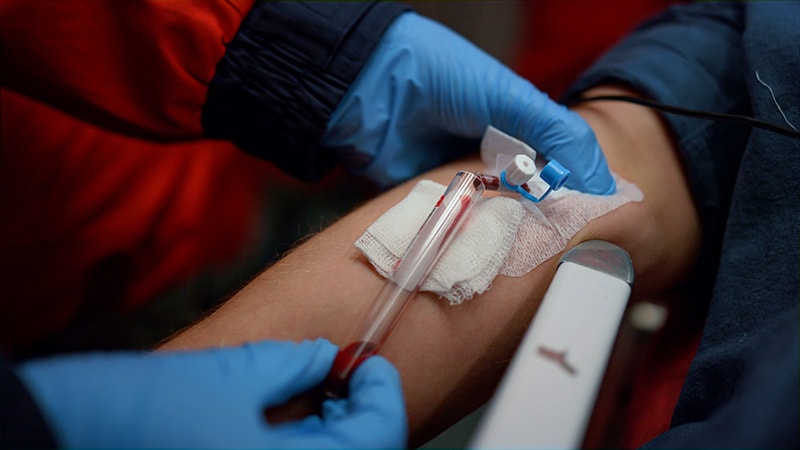[ad_1]
A blood test conducted in a prehospital setting may rapidly distinguish between ischemic and hemorrhagic stroke, potentially facilitating more rapid, targeted treatment.
The test measures the levels of glial fibrillary acidic protein (GFAP), a protein specific to the brain which is released into the bloodstream when brain cells are damaged or destroyed. It is already used to assess traumatic brain injury.
“Our findings suggest that this blood test may allow some hemorrhagic and ischemic stroke patients to be identified and treated by paramedics in the ambulance without needing a CT scan,” Love-Preet Kalra, MD, RKH Klinikum Ludwigsburg, Ludwigsburg, Germany, told Medscape Medical News.
“This could be very exciting as we know that earlier intervention with specific treatments in both types of strokes can lead to better outcomes. For example, patients with ischemic stroke could be given thrombolysis in the ambulance and those with a more severe stroke could be directed straight to a comprehensive stroke center for thrombectomy. While patients having a hemorrhagic stroke could receive earlier blood pressure reduction,” she added.
Kalra presented the latest study on GFAP testing in patients with stroke on February 5 at the International Stroke Conference (ISC) 2025.
Ischemic vs Hemorrhagic Stroke
For the study, prehospital blood samples were collected from 353 patients with suspected acute stroke, and the levels of plasma GFAP were measured using the handheld i-STAT Alinity (Abbott) device.
The levels of GFAP were correlated to the final diagnosis at hospital discharge categorized as intracerebral hemorrhage (ICH), ischemic stroke, or stroke mimic.
Results showed that GFAP concentrations were strongly elevated in patients with ICH (median, 208 pg/mL) compared with those with ischemic stroke (median, 30 pg/mL) and stroke mimic (median, 48 pg/mL).
“We found that in patients with moderate or severe neurologic deficit strokes (NIHSS [The National Institutes of Health Stroke Scale] > 6), a GFAP value of below 30 pg/mL could be used to exclude ICH. In future it might be possible to treat these patients with thrombolysis in the ambulance, and those with a suspected large vessel occlusion stroke could be taken straight to a thrombectomy capable center,” Kalra noted.
Results showed that 64 patients had a GFAP level
The GFAP values defining an upper threshold indicating a hemorrhagic stroke differed by age as GFAP levels tend to be higher in older people, Kalra explained. In this study, the levels of GFAP > 57 pg/mL correlated to a diagnosis of hemorrhagic stroke in patients younger than 72 years compared with the levels > 150-160 pg/mL in those older than 72 years.
In addition, patients who had an ICH associated with the use of anticoagulants had the highest levels of GFAP, an observation which could lead to identification of patients for the early administration of anticoagulant antidote medication.
Kalra explained that in the current study, the blood samples were taken in the prehospital setting, but the analysis was conducted in the hospital laboratory. Part of the reason for this was that the samples need to undergo centrifugation to allow GFAP testing in the plasma. Going forward, new technology will allow the test to be conducted in whole blood, which should allow point of care tests to be developed suitable for use in the ambulance.
She noted that further studies are needed to confirm and build on these preliminary results, with larger multicenter trials planned with the whole blood point of care tests.
Commenting on the study, American Heart Association expert volunteer Louise D. McCullough, MD, chief of neurology at Memorial Hermann-Texas Medical Center and co-director of UTHealth Neurosciences, both in Houston, said she found the study results “incredibly interesting.”
“It was really surprising to me that a point-of-care test could differentiate ischemic stroke from hemorrhagic stroke. This is very important because the treatment for these two diseases is very different.”
The study was funded by AstraZeneca. Kalra and McCullough reported no disclosures.
[ad_2]
Source link : https://www.medscape.com/viewarticle/ambulance-blood-test-may-rapidly-identify-stroke-type-2025a10003sq?src=rss
Author :
Publish date : 2025-02-13 13:38:26
Copyright for syndicated content belongs to the linked Source.
